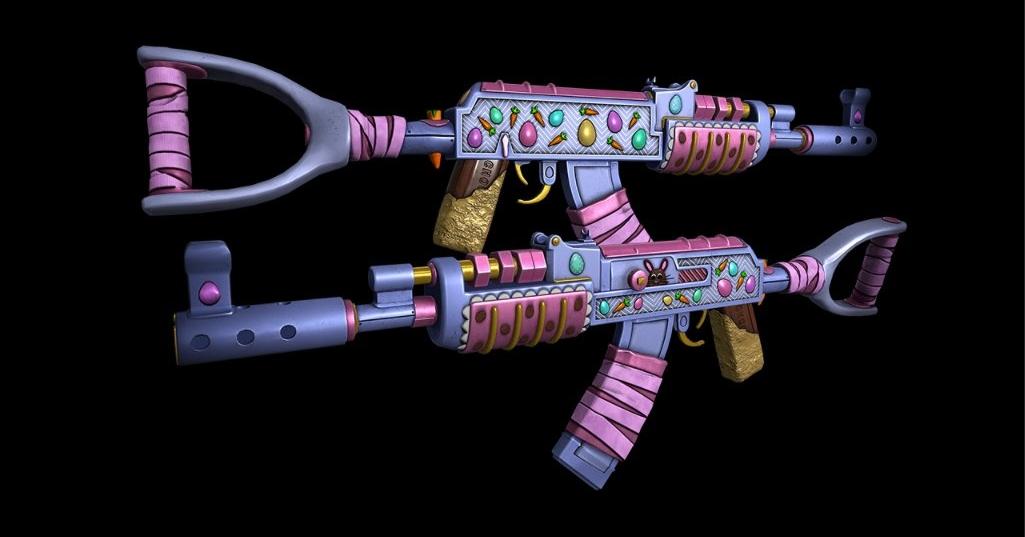The world of virtual gaming has witnessed a remarkable evolution, not just in gameplay and graphics, but also in the realm of virtual economies. Games like Counter-Strike: Global Offensive (CS:GO), Dota 2, and Rust have introduced a novel concept – skins. These digital cosmetics, ranging from weapon finishes to character outfits, have added a unique layer of personalization to gaming experiences. In this guide, we will delve into the fascinating world of skin market analysis, exploring the underlying factors that influence skin values and understanding the techniques to effectively navigate this dynamic market.
What are Skins in CS:GO, Dota 2, and Rust Games?
Skins in games like CS:GO, Dota 2, and Rust are cosmetic items that allow players to customize the appearance of their in-game weapons, characters, or items. These virtual items do not impact gameplay mechanics but instead, enhance the visual experience of the game. Skins come in various designs, colors, and rarity levels, ranging from common to extremely rare. They can be obtained through in-game drops, trading with other players, or purchasing from marketplaces. Skins have gained immense popularity due to their unique designs, the prestige associated with rare items, and their potential value within virtual economies. Players often seek out specific skins to express their individuality and style, while some skins hold significant monetary value, creating a thriving secondary market for trading and collecting.
Understanding Skin Market Fundamentals
At its core, skin is a digital artwork that players can apply to their in-game items, often enhancing their visual appeal. The value of these skins, however, isn’t purely aesthetic. Several factors contribute to their market value:
Rarity: Just as in the physical world, rarity plays a pivotal role in determining value. Skins are often categorized into tiers like common, uncommon, rare, and legendary. Rarer skins tend to command higher prices due to their scarcity.
Condition/Float: The concept of ‘wear and tear’ applies to digital items as well. The condition or “float” of skin indicates its level of wear, affecting its visual appeal. Factory New skins with minimal wear tend to be more valuable compared to those with battle scars.
Exterior Quality: Skins come in different exterior quality categories, including Factory New, Minimal Wear, Field-Tested, Well-Worn, and Battle-Scarred. Each category reflects the level of wear and subsequently impacts the skin’s appearance and value.
StatTrak Feature: Some skins come equipped with a StatTrak module that tracks in-game statistics, like kills or usage. StatTrak skins are usually rarer and consequently more valuable due to their additional functionality.
In-game Popularity and Demand: The popularity of a skin within the game’s community can greatly influence its value. Skins used by professional players and endorsed by popular streamers tend to be in higher demand, thus affecting their price.
Skin Research and Data Collection
Analyzing the virtual skin market relies on data gathered from various platforms, including official marketplaces and other third party platforms, i.e. Steam analyst alternatives, which display current skin prices. These sources offer a wider view of the market and enable an understanding of historical price trends. By examining this information, it’s possible to detect patterns and fluctuations over time.
This analysis, drawing from both traditional platforms and Steam analyst alternatives, provides key insights into the market, aiding in more precise assessments and effective strategies within the virtual skin trade.
Comparative Analysis of Skin Rarity
Skins are often classified into rarity tiers, which strongly impact their value. The allure of opening cases with the hope of obtaining a rare skin drives up demand. Limited edition skins, tied to specific events or promotions, become even more valuable due to their exclusivity. A noteworthy exercise is cross-game rarity comparison, where skins from different games can be contrasted based on their rarity and value.
Evaluating Skin Conditions and Exterior Quality
Skin conditions significantly affect value. Players often seek Factory New skins due to their pristine appearance, commanding higher prices compared to Battle-Scarred skins with visible wear. Rarity can also vary by condition, further affecting pricing. To assess condition, players can use float values, numerical indicators that represent a skin’s wear on a scale.
Incorporating Special Features
The inclusion of special features can drastically alter a skin’s value. StatTrak modules, for instance, can transform a common skin into a highly sought-after item due to the added functionality of tracking kills. Souvenir skins obtained from in-game events, like major tournaments, have unique stickers and a distinct event-related value.
Analyzing In-Game Popularity and Demand
The impact of in-game popularity on skin value is undeniable. When professional players frequently use a specific skin or when renowned streamers endorse it, demand skyrockets, leading to price surges. Trends in skin demand are influenced by shifting metals, changes in weapon preferences, and even thematic events. Keeping a finger on the pulse of these trends can be advantageous for market analysis.
To Wrap Up!
The realm of skin market analysis is a blend of art and science. Understanding the intricacies of rarity, condition, special features, and demand dynamics is essential for successful navigation. The value of skins isn’t confined to their visual appeal; it extends to a complex interplay of player preferences, trends, and market forces. Armed with the insights from this guide, you can embark on your journey of analyzing and interpreting the virtual economy of gaming skins, unlocking the potential to make informed decisions in this exciting and ever-evolving landscape.

